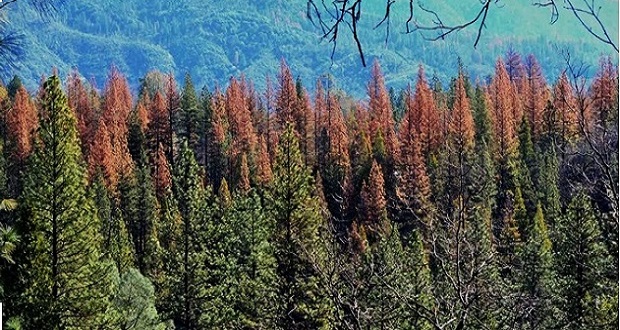CALIFORNIA — The USDA Natural Resources Conservation Service (NRCS) in California is expanding its initiative to assist private forestland owners in addressing tree mortality and other drought-related damage to improve forest health.
NRCS will provide financial assistance for landowners with dead and dying conifer forest trees in certain counties. Removing dead tree debris and other woody material will also help reduce the spread of invasive pests and reduce the threat of wildfire.
“The dry conditions posed by California’s ongoing drought have increased the potential for devastating wildfires and insect-related tree mortality,” says Carlos Suarez, NRCS California state conservationist.
“In the upcoming year, NRCS will continue and expand our 2016 forest recovery efforts by initially allocating $4 million for tree mortality projects. We will also provide additional forestry staff to meet the overwhelming demand for assistance.”
Landowners with dead trees on non-industrial private conifer forestlands in Madera, Mariposa, Amador, Calaveras, El Dorado, Fresno, Kern, Lake, Los Angeles, Nevada, Placer, Riverside, San Bernardino, San Diego, Tulare and Tuolumne counties may be eligible for financial assistance.
Funding is available through the NRCS Environmental Quality Incentives Program.
The Forest Tree Mortality Initiative is focused on removing dead trees on larger, severely damaged, private forestlands. Interested applicants will need to develop a Forest Management Plan for their forestland property.
The minimum size forestland property is one acre and at least 100 feet wide. An applicant with more than 20 percent of their conifer forestland property covered with dead trees will receive priority funding consideration. An approved NRCS Forest Management Plan for tree mortality will not include tree removal on lands within 100 feet from homes.
Please contact your county’s tree mortality task force about opportunities for removing dead trees around homes. Approved conservation practices include treating or removing woody residue from dead or dying trees, thinning overstocked forest stands, and tree planting.
Suarez further explains that the Agency’s landscape restoration efforts are part of USDA’s Building Blocks for Climate Smart Agriculture.
“Our focus is to combine healthy forest practices with the need to sequester carbon and improve soil health,” he added.
Please note that representatives from the offices of Senator Tom Berryhill and Assemblyman Frank Bigelow will hold local mobile office hours in Mariposa and Oakhurst on Wednesday, Nov. 9, and will have a tree mortality specialist available for questions and conversation. For more information follow this link.




